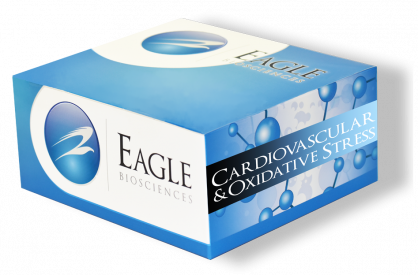NAG1 MIC1 Assay Kit
The NAG1 MIC1 Assay Kit is For Research Use Only
Size: 1×96 wells
Standard Range:
Serum and Plasma: 85 – 1350 pg/mL
Urine: 34 – 32,000 pg/mL
Incubation Time: 3.5 hours
Sample Type: Serum, Plasma, Urine
Sample Size: 100 µl
Assay Background
Macrophage inhibitory cytokine (MIC-1) is a divergent member of the TGF-β superfamily. The DNA sequence of MIC-1 is identical with several other sequences, including growth differentiation factor-15 (GDF-15), placental bone morphogenetic protein (PLAB), placental transforming growth factor (PTGF -β), prostate-derived factor (PDF), and nonsteroidal anti-inflammatory drug-activated protein-1 (NAG-1). MIC-1 mRNA encodes a secreted protein, resulting from cleavage of a propeptide to give rise to the mature form as a 25-kDa homodimer, which contains seven conserved cysteine residues in the carboxyl terminal. There are at least two known alleles of MIC-1 that are due to a G C point substitution at position 6 of the mature protein which alters a histidine to an aspartic acid.
MIC-1 is distributed in various tissues, being highly expressed in macrophages, choroid plexus, prostate, lung, kidney proximal tubules, placenta and intestinal mucosa. It is poorly expressed in the heart although it has been described as a prognostic marker in acute myocardial infarction as well as an independent predictor of chronic heart disease mortality.
Initially, MIC-1 was considered to function primarily as a macrophage inhibitor, but recent studies suggest that it is pleiotropic regulating a myriad of cellular processes such as the cell cycle, proliferation, differentiation, and apoptosis. MIC-1 expression can be induced by stress conditions such as tissue injury, malignancy and inflammation. It has recently been implicated as a cachexia mediator inducing weight loss.
MIC-1 is overexpressed by a variety of cancers, which may relate to its antitumorigenic and proapoptotic properties, although recent studies describe contradictory mechanisms. For example, it has been reported to exhibit both tumorigenic and antitumorigenic activities. MIC-1 expression is correlated with the tumorigenicity of melanoma cells where it is highly expressed. MIC-1 may serve as a biomarker for the prediction of gastric cancer progression. Serum concentrations in cancer patients were 10-fold higher than those of healthy controls. Serum MIC-1 has been described as a biomarker capable of predicting prostate cancer prognosis.
Prostate-derived factor (PDF/MIC-1) may be related to cellular stress through its interaction with p53. The p53 tumor suppressor modulates cellular responses in various models of cell stress. Furthermore, there appears to be a requirement for functional p53 in PDF induction in these disparate models indicating that PDF may represent a novel target of p53 in response to cell stress.
Related Products
GST Pi Assay Kit
Glutathione Total Assay Kit
Human Tissue-type Plasminogen Activator (tPA) Activity ELISA Assay Kit


